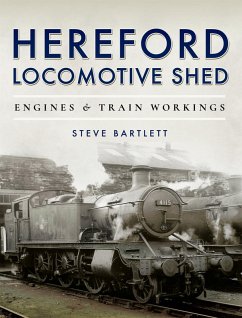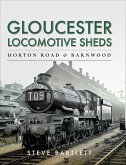Hereford Locomotive Shed is the first in a series of in-depth studies to look closely at the changing engine allocations and operational responsibilities of motive power depots during the latter days of steam. In Herefords case this was a varied mixture of main line passenger, freight trip working, branch line passenger, station pilot duties and yard shunting. Unusually, the latter remained a steam preserve until months before depot closure in November 1964. Not forgotten are the depots small sub-sheds, which had varying responsibilities over the years, as the district boundaries changed at Ledbury, Leominster, Ross-on-Wye and Craven Arms. Their very different duties were inevitably a reflection of a bygone age and an all too rapidly changing future.The author personally recorded the Hereford railway scene from the late 1950s, until depot closure. He made shed visits several times a week, and at other times observed the ever-changing locomotive scene from the elevated Bulmers Sidewalk behind the depots coaling stage. Details carefully kept from those far-off days has proved a valuable cross reference with present-day research into Herefords role from official records at The National Archives, Kew, and other railway research sources.Having spent almost forty years working in the industry, the author is able to sympathetically unravel and interpret the story of this hard-working mixed traffic depot. Hereford is strategically located on the North & West route from South Wales and the West of England to the North West, as well as being an important junction for Worcester & the West Midlands. Branch lines to Brecon and Gloucester radiated from this Border Counties railway junction, and freight trips radiated out to serve the surrounding area. All of this made Hereford a fascinating rail centre and a locomotive shed worthy of its story for posterity, which is meticulously recorded in this book.
Dieser Download kann aus rechtlichen Gründen nur mit Rechnungsadresse in A, B, BG, CY, CZ, D, DK, EW, E, FIN, F, GR, HR, H, IRL, I, LT, L, LR, M, NL, PL, P, R, S, SLO, SK ausgeliefert werden.









